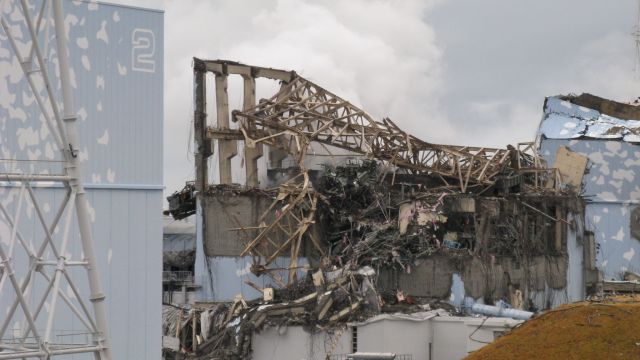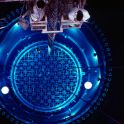
Analysis of Information from Reactor Buildings and Containment Vessels of Fukushima Daiichi NPS“ (ARC-F)
Objective of the project and tasks of GRS
The focus of the investigations in the ARC-F project will be on the behaviour of radioactive fission products, such as caesium, strontium or iodine, during the accident sequences. In-depth knowledge of the fission products released, together with information on the status of the reactor core and the distribution of the core melt in the reactor and containment, can allow conclusions to be drawn about the exact accident sequence. During the nuclear accident, fission products were released into the containment and along different pathways into the buildings and the surrounding area, thus contributing significantly to the radiation exposure.
The researchers hope that this will provide important clues for the upcoming dismantling of the destroyed reactors. In addition, investigations such as these and the information obtained during inspections of the destroyed reactor units can be used to validate and improve the simulation codes used to calculate serious accidents in nuclear power plants. Ultimately, all the new findings about accident sequences are used in the further development of plant safety for operating reactors.
Germany's participation in the ARC-F project is funded by the Federal Ministry of Economics (BMWi). GRS will participate in this project within the scope of its research work. Its tasks include, among others, calculations of the accident sequences in the identical Units 2 and 3 at Fukushima Daiichi, using the simulation code AC² developed by GRS for the analysis of accidents with core destruction and fission product release. In addition, the GRS experts will also carry out so-called recalculations of the fission product release from the plants. Based on the local dose rates measured in the vicinity of the power plant site, the quantity and type of radioactive substances released during the accident will be determined. The data obtained in this way will be used for comparison with the results of the accident analyses.
ARC-F as a continuation of the research activities on Fukushima
The ARC-F project continues the previous scientific guidance and support of Japanese organisations in planning the dismantling of the destroyed units at Fukushima Daiichi. It follows on from the OECD/NEA project BSAF „Benchmark Study of the Accident at the Fukushima Daiichi Nuclear Power Station” (Phase I and II), which ended in 2018, and builds on the analyses of the accident sequence carried out in that project. Information on further work in which GRS was involved in the context of Fukushima can be found on our Fukushima website.
Project highlights Reactor Safety

Researchers worldwide are working on small modular reactors (SMR) and microreactors (very small modular reactor, vSMR). Many of these new reactor concepts are being developed for specific applications and have special core geometries. In order to be able to simulate the neutron-physical behaviour of these cores, GRS is developing the simulation code FENNECS (Finite ElemeNt NEutroniCS).